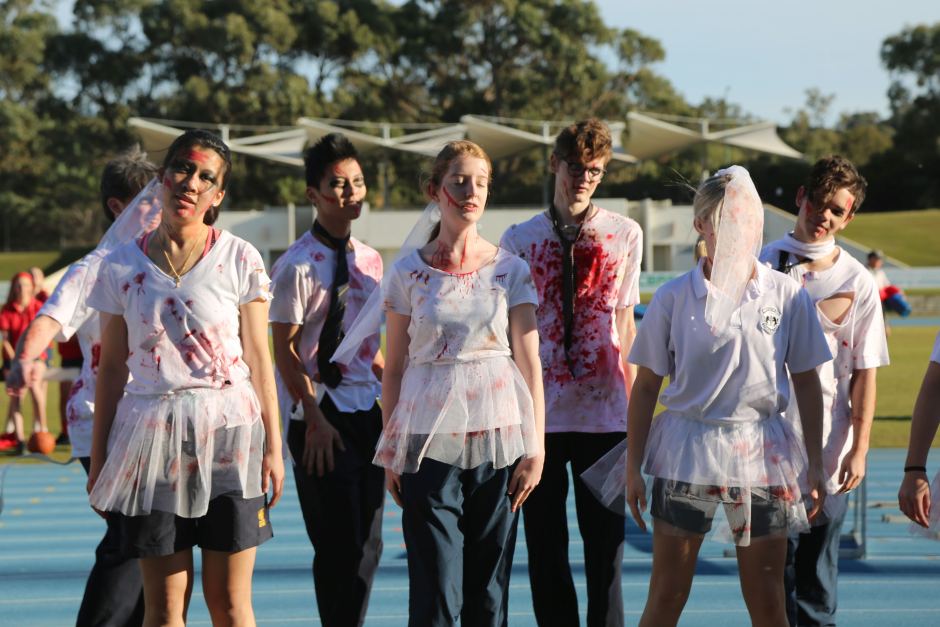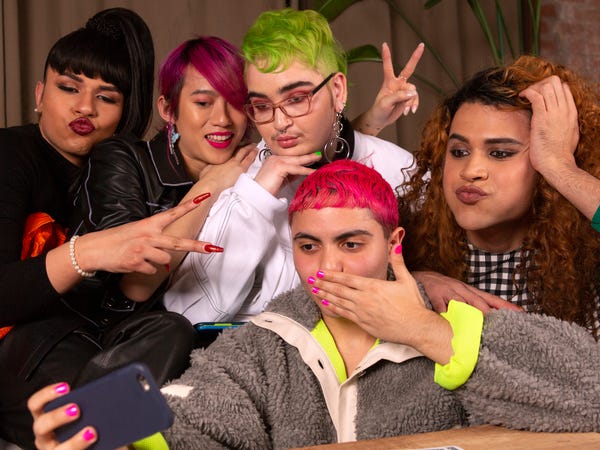Designing Online Enrolment Processes for Generation Like

The Best Platform For Online Enrolment is People
Back in 2013 along with Chris Evans, Head of Technology Enhanced Learning at the University of Warwick and Dr Chris Davies, educationalist now of Snowdonia where he spends a rather idyllic time surrounded by the amazing Welsh mountains, we collaborated with IBM on a project titled ‘Classroom in the Cloud, From Virtual to Social Collaborative Learning’.
Our research was published in the International Journal of Cloud Computing and the lessons we learned from this experiment are even more relevant today specifically in relation to building engagement in online learning spaces as the world moves online in unprecedented ways. (Apologies for making use of the currently overused word unprecedented. As someone commented recently, they long to return to precedented times!)
Through our research we wanted to test the effectiveness of learning as it transitioned from the campus to the cloud and for those convinced that technology can solve all of our challenges our research findings made for uncomfortable reading. We demonstrated that technology when used wisely can be a major additional asset in helping educators to augment their capabilities but when it came to engagement and retention, it was all about people, not the tech.
As colleges and universities look to this September mindful that they may have to deliver enrolment, induction and possibly teaching largely or entirely online, this lesson has never been more important. Colleges wanting to get this right would be wise to focus on people, rather than the platform.
The ‘doomed‘ induction process of “College A”
I was once asked to look at the induction process of a college and for the purpose of this article we will refer to this college as college A.
Everything I am about to describe was the literal experience and nothing has been embellished or changed for dramatic effect, not least because it didn’t need it.

I walked into the induction event and observed the following.
Various stalls were laid out in the entrance:
- The first stall was asking if I wished to give blood.
- Next along was a local police stand handing out assault alarms should the worst happen to me at the college.
- Next was a mental health stand along with safeguarding staff handing out leaflets about radicalisation online and the dangers of the internet.
- Making my way further along the “corridor of doom” I was presented with various administrative processes I needed to complete.
During my time in this process I observed new students arriving to be sent to three different locations only to be sent back to the first one to complete the process (giving them little time to give blood, have a crisis or get radicalised).
The powerful induction process of “College B”
I thought there must be a better way, so off I went to visit college B.
On arrival at college B before I even got to the main entrance to the induction I could hear music. Loud music. It turned out to be a student band at the college and rather fab they were too.
As I approached the entrance a person handing out free pizza from a rather well known pizza company handed me a slice and very nice it was too. I then noticed that the entrance had been designed to promote various activities and societies none of which related to core college business, or being assaulted, or running out of blood.
That said the next stand I noticed was one advertising ‘zombie night’ so if they had borrowed the ‘give blood’ sign from the previous college it might have worked well as a concept.

There was a theme park society where they organised days out to Alton Towers (and other theme parks were also available) and a whole bunch of wider social events and activities.
I observed and I listened. To the casual observer college B might have looked a little like some sort of festival and little to do with induction, and listening to the staff, that was exactly what they had intended.
There was intelligent design behind everything that this college was doing. They had designed the process around people and the social aspect of how we live, learn and work.
Everywhere I looked students were taking selfies either in front of the band or with a zombie or just eating a rather tasty slice of pizza. This was an induction designed for the Instagram age and it was working.
The real power of it? Everyone had stories to tell, share, and connect over. Social networks were forming and happening in real time with people who didn’t know each other before and a bond with the college was being formed.
This matters not least because humans have been telling stories since we could paint on walls, Instagram is just the digital cave wall.
Importantly, we tell stories about what we care about, and online induction programmes have to be worthy of telling stories to be successful.
So what does this mean for online enrolment, engagement and induction?
The lessons from both the research we did back in 2013 and the more recent experiences of colleges A and B are that building social networks and stories with new recruits are critical if they are to remain engaged in the process.
Back in 2013 we took several groups in our research and exposed them to three different processes:
- One group of new learners began completely online
- One group began completely on campus
- One group began on campus and transitioned to a blended model that offered a hybrid of the two tailored to personal preferences (it was a highly customisable model).
It was the blended hybrid mode that emerged a country mile ahead of the others but the critical factor to understand is why.
Although several variables were at play the clear critical factor was the way in which we all form social networks and tribes in our journey, and the power of facilitating that at the start can make all the difference to retention and success later. Everyone needed a friend and story to tell from day one.
For evidence of this, it is my contention that a college can more easily transition a year 1 group already in the college and receiving instruction on site to an online approach in year 2, than to take on a new cohort and deliver it entirely online from day one.
My contention is that a likely reason for this is down to how we engage and build bonds as social creatures. Putting a lot of content online and somehow thinking that is online learning is exactly where most MOOCs went badly wrong and why I described them some time ago as the “digital equivalent of Siberia”.
September and beyond
Looking to September and beyond I am increasingly convinced that for colleges and universities we are facing the biggest opportunity in history to engage more people in new ways than ever before.
Looking at the economic impact of the coronavirus pandemic that’s hitting both younger people and those in more traditional professions the hardest, an unprecedented number of people are going to need to upskill or learn something completely new. I have little doubt that the UK Government is not aware of this and colleges should be prepared to rise to the challenge.
Fortune favours the prepared mind as the saying goes, so looking ahead the colleges most likely to be successful in this possible future scenario are those whose primary focus is not just on recruitment (there’s going to be no shortage of people looking for help shortly), but rather those who are focusing right now on how to retain new learners in ways that build social networks and give people a story to tell on the digital platforms they use.
In the business world it can be called tribal commerce. In education the same principle applies.
Generation Like

There is a wealth of academic research both established and emergent that explores the online dynamics of generation z in particular in this context, what Jin Yea Jang, Kyungsik Han, Patrick Shih and Dongwon Lee all of Pennsylvania State University call ‘Generation Like’ in their article ‘Comparative Characteristics in Instagram’.
Many of the contentions in this research are also evidenced more widely through publications such as ‘Generation Z Goes to College’ from Corey Seemiller and Meghan Grace, where the changing characteristics of education in an online world makes it essential that educators understand the dynamics of online learning to engage, retain and inspire learners to stay the course.
Building social networks from the start will be a critical success factor
During an induction delivered online, building social networks from the start will be a critical success factor. Asking questions like how your online enrolment process will build a friend from day one is more important than whether you’ve captured household income data, since for the latter to matter at all you have to keep the student in the first place.
I have no idea what college B might be planning in regard to flipping it’s rather brilliant induction and enrolment process into a more online version of it but if it applies the same thinking and intelligent design to it I have little doubt they will do well.
In the globally connected digital village, if your induction isn’t worthy of sharing on social media, it didn’t happen, and in a time when society has shifted from ‘word of mouth’ to ‘world of mouth’ creating outstanding experiences that give learning communities stories they want to tell others will make all the difference because learning is fundamentally a social process.
Using technology to engage, enrich and inspire
We have the technologies to enable online induction and enrolment, but to be successful we have to use these technologies to engage, enrich and inspire others to care enough about what we do to share it.
Looking back at college A, it felt like that the whole experience was done to me and it made me feel like I had just listened to ‘Holding Back the Years’ by Simply Red. Contrast with college B and it was more Van Halen ‘Jump’ because it was focused on social collaborative experiences worth telling others about. If you’ve not heard of either of those musical references you can seek them out on Spotify, so my daughter tells me.
Looking at enrolment and induction in 2020, my contention is that the future will belong to those educators who don’t just mirror the same process online, but rather take time out to reimagine how induction can be if we put people at the core of its design. Get that right, and your college or university won’t have to find new future recruits because they will already have found you through the tribes they belong to.
Jamie E Smith, Executive Chairman, C-Learning













Responses